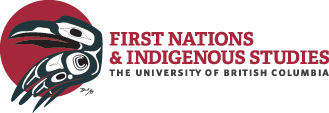I’m speaking for Okanagan Indigenous peoples in terms of the way we think about land. We never have ever thought of it, I don’t think, as anything static. As anything physical. We’ve always thought about it as a process of interactions, a process of changes and a process that’s ongoing…. And so a lot of things that we think about as Okanagan people is how those systems should inform us, in terms of our interactions and the principles that we need to think about and adhere to. In the process of learning in our society, one of the things that we have come to understand is that there always needs to be that connection to and from the individual, and the connection of the family, and the connection to community, and how that intersects to the natural world.”
Jeanette Armstrong
Okanagan author & educator
For many Aboriginal cultures, land means more than property– it encompasses culture, relationships, ecosystems, social systems, spirituality, and law. For many, land means the earth, the water, the air, and all that live within these ecosystems. As scholars Bonita Lawrence and Enakshi Dua point out using historical examples, “to separate Indigenous peoples from their land” is to “preempt Indigenous sovereignty.” Land and Aboriginal rights are inextricably linked.
Aboriginal rights and title are not granted from an external source but are a result of Aboriginal peoples’ own occupation of and relationship with their home territories as well as their ongoing social structures and political and legal systems. As such, Aboriginal title and rights are separate from rights afforded to non-Aboriginal Canadian citizens under Canadian common law.
In this section, we present the various understandings of Aboriginal rights and title as seen in a Canadian context, as well as profile several precedent-setting court cases.
In this section
- Aboriginal rights are collective rights which flow from Aboriginal peoples’ continued use and occupation of certain areas. They are inherent rights which Aboriginal peoples have practiced and enjoyed since before European contact.
- Aboriginal title refers to the inherent Aboriginal right to land or a territory.Aboriginal rights are inherently tied to the land and their access to it– this is why title is frequently mentioned separately.
Precedent-setting court cases
- R v Calder [1973] was the first time the courts acknowledged that Aboriginal title to the land had existed at one point– although the court was evenly split on whether or not title continued to exist. This significant case would pave hte way for addressing Aboriginal title in Canada.
- R v Guerin [1984] established that Aboriginal title was a sui generis right and the Crown had a fiduciary duty to protect it for Aboriginal peoples.
- R v Sparrow [1990] established the “Sparrow test,” a set of criteria to determine under what conditions the government could legally infringe on Aboriginal rights.
- R v Van der Peet [1996] established a set of criteria to determine whether an Aboriginal right was protected as an “existing” Aboriginal right under the Canadian constitution.
- R. v. Powley [2003] was the first major Aboriginal rights case concerning Métis peoples. The Powley decision resulted in “the Powley Test,” which laid out a set of criteria to not only define what might constitute a Métis right, but also who is entitled to those rights.
Aboriginal Rights in B.C.
- Aboriginal fisheries in British Columbia: A major point of contention when it comes to Aboriginal rights in Briitsh Columbia has been the subject of Aboriginal rights to fish, and Aboriginal fisheries. Premised on the pre-existing, inherent Aboriginal right to fish, Aboriginal fisheries may be viewed as a means to ensure that Aboriginal fishers retain access to their historic and ancestral fishing spots. Many opponents to the fisheries, however, argue that Aboriginal fisheries are “race-based,” a misconception that disregards historic treaty promises, government guarantees, and pre-existing Aboriginal rights.

